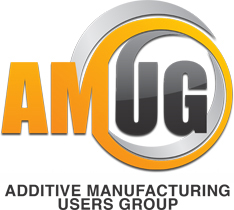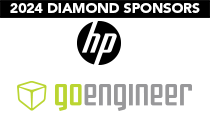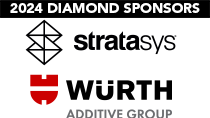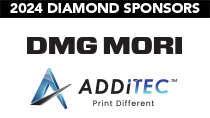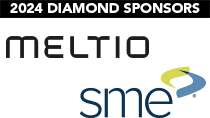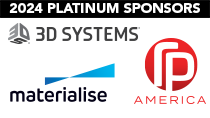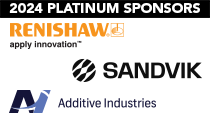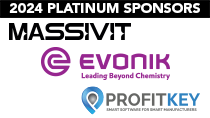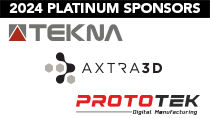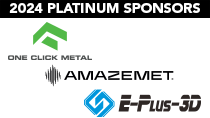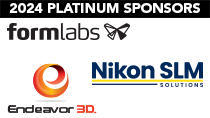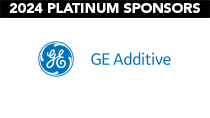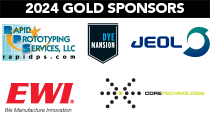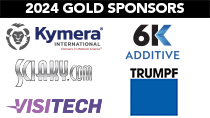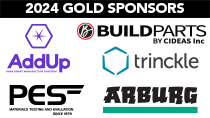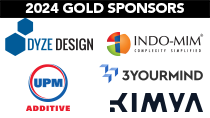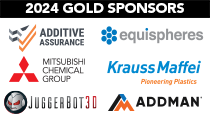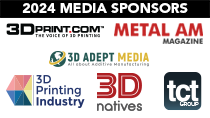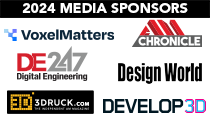June 2021
President’s report
My Fellow Users,
It was amazing to see all of you at our users group conference. The sharing of information and debating of ‘facts’ was amazing and nonstop. And seeing everyone enjoy the event was invigorating.
I had barely enough time to see what all of our sponsors and exhibitors had to offer. Getting to learn of all of the new and innovative advancements made the effort worthwhile, and I am still processing what I discovered. As usual, having other members to confer with, and to share with, really helped. I hope you were able to gain the insights that will help you answer your questions and advance your AM projects. But the information flow doesn’t end with the conference. For example, you will also see a lot of sponsor information shared in this newsletter right up to the start of AMUG 2022. Please support the AMUG sponsors…I encourage you to reach out to them for your AM needs.
During AMUG 2021, we heard from four scholarship winners. Sitting in on their presentations, I found the discussions of their work fascinating, and I was moved/touched by their stories. The scholarships are a great tool to help build successes for our members and the industry. Getting these brilliant up-and-coming minds involved provides an avenue for them to apply their passion to our industry. In this newsletter, we hear firsthand accounts of the AMUG experience from two Guy E. Bourdeau Scholarship winners, Kate Schneidau and Sean Dobson.
I want to thank all of the candidates that accepted a nomination for our director positions. We had an impressive slate of candidates for the election. And with our members’ votes, we have a great AMUG Board that will take the reins on July 1st. Considering board transitions, open projects, and 2022 planning, we have a lot of work to do. But I am confident that we will be able to prevail. After all, look what we had to do to pull off a fantastic AMUG 2021. Please reach out with your comments and any words of support for all of our volunteers.
We have a lot of information that will be coming at you as we wind down AMUG 2021 and spin up AMUG 2022. This information will be communicated through our LinkedIn posts (and other social channels), the newsletter, and the website. Keep an eye out for all of our communications with more details and sponsor information.
I look forward to toasting with you at the next opportunity that we have to get together! Please be safe until we meet again.
All the best!
Carl Dekker
President
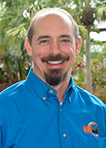
Carl Dekker
President
Second generation DINO
DINOs are rare (only 174 awarded in 33 years). Rarer still are ‘seconds.’ There are two individuals (Joe Allison and Graham Tromans) with two DINOs. And there are several companies that had multiple employees receive DINOs, such as BD, DSM, GE Additive, and ProtoCAM. With DINOs awarded to Jerry Bordner (2010), Bret Bordner (2011), and Paul Bordner (2013), AMUG had its first occurrences of second-generation recipients.
With the 2021 DINO presentations, we had a second occurrence. When Robin Van Bragt of Eagle Design and Technology Inc. accepted her award, her family became the second to have second-generation DINOs. Back in 2010, her father, Bruce Okkema, received his DINO.
Robin and Bruce held the same position (president of Eagle Design and Technology) when they were named as DINOs.
Congratulations, Robin.
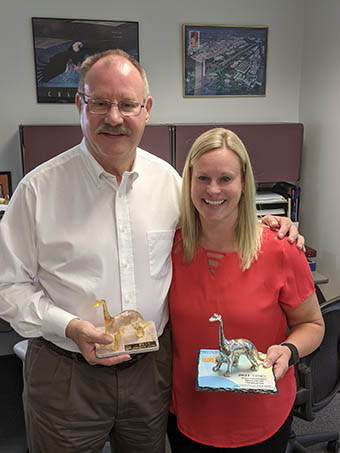
Bruce Okkema and Robin Van Bragt, two generations of DINOs.
Kate Schneidau: 2020 Guy E. Bourdeau Scholarship winner
My AMUG 2021 Experience
While the journey to my very first AMUG Conference was not what I envisioned, I can say without a doubt that it was worth the wait. Everything I had been told to expect was reached and exceeded within the first day. Words cannot describe the feelings of attending AMUG 2021, especially for the first time, and meeting so many individuals with a boundless passion for AM.
I learned an incredible amount about applications, processing techniques, and even about other technologies I previously knew nothing about beyond news articles. With many session tracks to choose from, I was able to learn not only about advancements in my application background but introduce myself to different perspectives in additive from nanometals to casting and mold making. I attended the hands-on silicone mold making and urethane casting workshop. While I met challenges that did not allow my success, I enjoyed myself, the topic, and the conversation with the instructors and other attendees. Next year, I will go through the workshop again and walk out with a finished part.
Personally, my favorite parts of the week were the networking dinners. At the beginning of the week, I met and talked to the many people who came early to the AMUG Conference to set up. They embraced me with open arms and spoke with me—not just about additive but also about life. I felt as though I had entered a giant family. Anyone I spoke with was so excited to be there and was engaging to learn more about the other person, especially since they knew it was my first year attending. I knew before the conference started that AMUG is a group of people who truly live and work with the intent to share and build relationships with their peers. This was only confirmed through the week as I met with more attendees and had the chance to not only talk about new technologies and applications but hear their stories of projects that they have done in the past. I received a history lesson on additive and AMUG that had me excited for the future. Since I am part of the next generation, I can use that knowledge that I learned to bring about more innovation and share with more young people who want to get involved in additive.
Having an extra year before attending my first AMUG, due to the postponement of the 2020 event, only made me appreciate the conference even more. My journey has only begun in additive, but I know that as I progress through my career, AMUG Conferences will be the events I will attend every year. There is so much I do not know within the field of additive, but I am excited to continue learning.
I am forever grateful to all the people I met at AMUG 2021 and the relationships that I created. Thank you to Renee Bourdeau, Cimquest, and the AMUG Board for giving me the opportunity to share my work and meet so many individuals. And I thank them for having this annual scholarship so that other students can start their AM journey meeting people who can impact their lives within the span of a week, just like I did.
I cannot wait for next year’s AMUG Conference.
Kate Schneidau
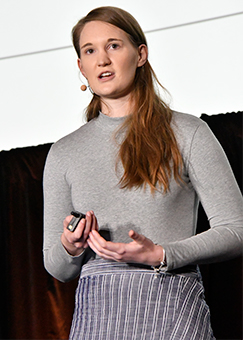
Kate Schneidau presents at AMUG 2021.
Sean Dobson: 2021 Guy E. Bourdeau Scholarship winner
My AMUG 2021 Experience
My AMUG 2021 experience was as expected in some respects and in others completely unforeseen. I had expected to network with great people and learn some of the incredible initiatives being developed within the AM industry. I had expected to see some great talks from leaders in their fields. I had expected an abhorrent amount of great food and drink. These expectations were met, especially that last one, because this was what the AMUG Conference was ‘pitched’ to me as. However, I did not anticipate how personally meaningful the experience would be to me. The people who run this event and those who attend are family, and I felt overwhelmed, in the best way, to be a part of it.
The conference and its activities proved two things: I had already learned a lot about my industry, and I had a lot more to learn. I was surprised and appreciative of how well curated the discussions were. I was able to keep up in my somewhat limited experience while also acknowledging potential avenues to explore in my various projects. Additionally, I was shocked when talking to people by just how knowledgeable yet excited they were about what they were working on. It made networking not only necessary but enjoyable.
In my application essay for this scholarship, I mentioned in my conclusion that “AMUG is a place where the titans of our industry meet….” While this is correct, the sentiment was wrong. Yes, big players in the industry come to the AMUG Conference, but they are not cordoned off in some strange VIP area I had created in my mind. They were usually the ones coming up and introducing themselves, asking the questions, and genuinely curious about my response. It was a refreshing and meaningful point that stuck out to me about the conference.
However, the event’s setup; the time squeezed in between sessions; and the late nights were where much of my personal and professional growth occurred over the week. One of the hundreds of people I had the pleasure of meeting used the adage, “You get out what you put in with AMUG.” I couldn’t agree more. You might be tired from that 3 a.m. chat with a select few who accompanied you on laps around the lazy river (just a hypothetical), but it’s the jovial commiseration that your diet will start again at the end of the event, the inside jokes you somehow developed in the two days of knowing someone, and the realization that some of these people will become lifelong friends, that carries you to the next 3 a.m. lazy river escapade.
I wouldn’t trade my AMUG experience for anything and can’t wait to help out next year and see my friends again.
Sean Dobson
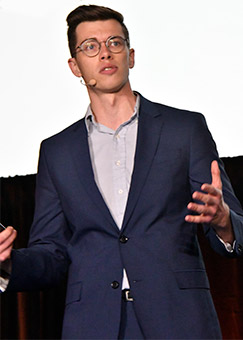
Sean Dobson shares his AM work at AMUG 2021.
2021 AMUG Conference proceedings are now available
Next week, all conference attendees will be emailed instructions for accessing the conference proceedings. If you do not receive the email, please check your spam folder for the subject line “2021 AMUG Conference Proceedings.” If you still can’t find it, please send an email to agenda@amug.com to have the details re-sent.
Note that access requires an access key, which you received prior to the conference for connection via our Mobile App and Online Planner. If you have this information handy, you can access proceedings through the AMUG Mobile App or via the conference website.
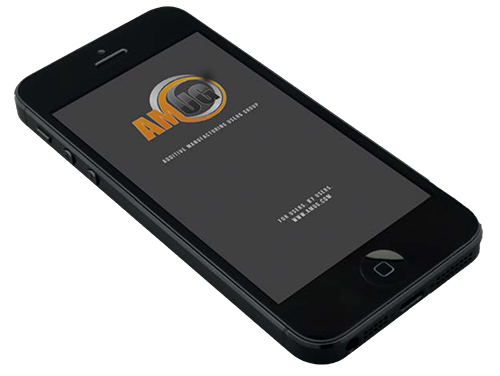
Wrapping up 2021; planning for ’22, ’23, ’24
It has been several weeks since the end of the 2021 AMUG Conference and AMUGexpo, but it seems like only yesterday. I hope everyone who attended found the event to be just as valuable and informative as in past years. If you were a first-timer, I would like to hear your thoughts and impressions, so please email me at EventManager@amug.com to share your experiences.
Save the dates!
The following dates are for the 2022, 2023, and 2024 AMUG Conferences. We will be at the Hilton Chicago for these years.
- 2022: April 3-7
- 2023: March 19-23
- 2024: March 10-14
We always have excellent attendance in Chicago because there are two international airports, which means we reach maximum capacity at the Hilton Chicago. So when the hotel reservation system opens (anticipated to be October 1, 2021) and you are 100% positive you will be attending, please book your room as soon as possible. If you are unsure about your ability to attend, I ask that you not book the hotel because last-minute cancellations may prevent others from staying onsite and may lead to AMUG not meeting its contractual obligations.
The Hilton Palmer House (1 block away) will be our overflow hotel for 2022, 2023, and 2024.
Tom Sorovetz
Event Manager
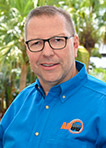
Tom Sorovetz
Event Manager
SPONSOR NEWS
Dyndritewww.dyndrite.com
New toolpathing API for AM
On April 20, 2021, at the annual Dyndrite Developer Conference, Dyndrite CEO Harshil Goel revealed new toolsets as part of the Dyndrite Accelerated Computation Engine (ACE) Toolpathing API. Developed by working directly with our raster and vector OEM customers and the Dyndrite Developer Council (DDC) members, these toolsets open a new era in software and hardware development for AM.
These are:
- Control over RGBA and distance fields for functional grading in raster processes
- Anisotropic compensation in raster processes
- Support-free metal additive through field-based segmentation
Additionally, Dyndrite leverages GPU acceleration and Python-driven automation tools. GPU acceleration allows AM software to catch up to the performance of additive hardware. With significantly faster slicing, you can simulate and test more quickly, certify parts and materials more rapidly, produce more complex parts, increase production rates, and help additive realize its potential.
Watch the keynote video for more detailed information.

LuxCreowww.luxcreo.com
Webinar: BRAGi replaces SLS nylon with LuxCreo’s DLP tough resin to achieve better 3D printing production parts and minimize post processing
Hear why BRAGi selected LuxCreo’s tough resin to improve its eyewear performance versus SLS nylon. Learn how LuxCreo’s expanded portfolio of tough resins, including TM 79 and TM 83, provides superior performance compared to other 3D printable tough materials, including nylon. See how LuxCreo’s industrial and desktop 3D printers (Lux 3 Series and iLux Pro) produce high-performance, tough production parts with LuxCreo tough resins achieving leading elasticity, toughness, bending resistance, and elongation-at-break versus SLS, SLA, and FDM technologies with unmatched batch printing speed.
Webinar key takeaways:
- Summary of LuxCreo tough resins compared to SLS, SLA, and FDM tough materials, including key benefits and opportunities.
- Lux 3 DLP and iLux Pro LCD tough resin printing speed and surface finish achievable for high-throughout production
- How high-performance tough resins are poised to achieve continued increases in performance, opening more tough industrial applications.
The webinar will take place on Thursday, July 15, at 11:00 a.m. (EDT). Register here to join us!
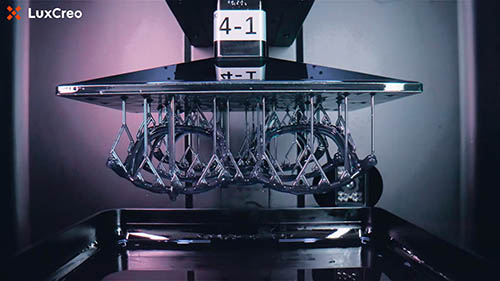
BRAGi eyewear printed with LuxCreo’s tough resin.
Forward AM by BASFwww.forward-am.com
Exploring new horizons in 3D metal printing
Metal filament 3D printing offers a galaxy of benefits: Geometric design freedom without the need for molds or castings, outstanding strength and corrosion resistance even with increased form complexity, and a greatly simplified production process from prototype to serial production. Even better, the major investments in machines and tooling required by previous metal 3D printing methods are now history.
During catalytic debinding, the binding agents are removed in preparation for final sintering. This can cause a loss of stability and structural integrity in the printed component.
To reduce the risk of distortion or collapse, our Virtual Engineering Team recommends performing a virtual debinding stability analysis before printing. This provides an estimation of internal stresses to evaluate the part’s structural integrity during debinding—and also gives a visual indication of which structural features are at risk. With our Debinding Stability Simulation Guideline, you can quickly and easily determine which features may not yet be optimal for metal filament printing.
Read the full article here.
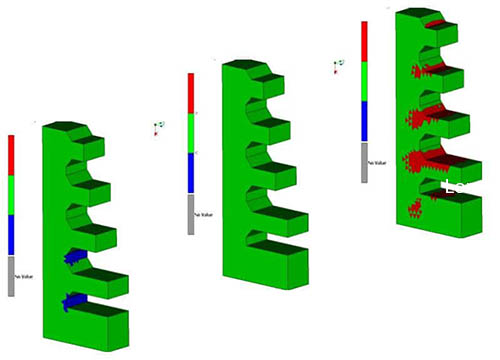
Analysis of internal stress during debinding. The red and blue areas show the critical tensile and compressive stresses.
Essentiumwww.essentium3d.com
Essentium’s rapid prototyping speeds time to innovation
Rapid prototyping through 3D printing gives manufacturers the flexibility to develop, test, and refine products or part designs before committing to costly large-scale production. However, innovation speed is entirely dependent on making the prototyping process fast, efficient, and effective.
Traditional AM platforms are often hindered by lengthy revision turnaround times for prototype refinements. Multiple revisions can be created in rapid succession by utilizing a machine like the Essentium High Speed Extrusion (HSE™) 3D Printing Platform.
On June 23 at 10 a.m. CST, Essentium will host a webinar focused on how to leverage the HSE 3D Printer to make changes quickly and print them with high speed. Additional topics will include techniques on how to create multiple revisions of a part without the cost of additional time, as well as methods to segment complex geometries to speed slicing revisions on whole parts.
To join the webinar, please register here.
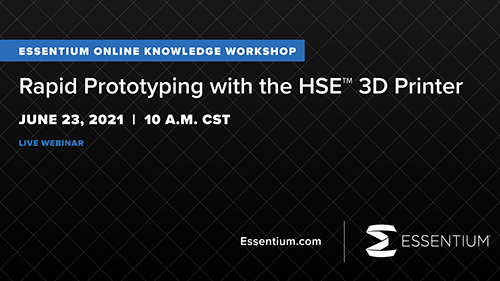
ExOnewww.exone.com
Case study: Metal binder jetting speeds up product development at MSA Safety, Inc.
MSA Safety, Inc. leads the industry in innovative products that protect people and facility infrastructures. MSA needed to determine a process to allow engineering to quickly iterate metal parts through design concepts while saving time, reducing cost, and shortening time to market.
MSA turned to ExOne for their metal binder jetting expertise, and since then, ExOne’s technology has helped ensure MSA products get developed quickly for testing so they can get to customers even faster.
“ExOne saved us a good amount of time. Time is critical for all projects at MSA. Lead times for a tool are 16-plus weeks, meaning we would traditionally have to order these parts without a good prototype solution to evaluate performance. ExOne’s solution allows the engineering team to quickly iterate through design concepts, saves time, and price savings over buying a tool.” Matthew Jacob, Mechanical Engineer, MSA.
Read the full case study here.
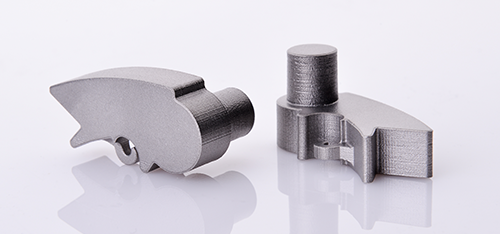
Sample of parts printed for MSA’s self-retracting lifeline device.
MEDIA PARTNER NEWS
Make Parts Fastwww.makepartsfast.com
Trends in materials and inkjet 3D printing
Materials have been and will continue to be key elements of any AM or 3D printing operation. New materials are emerging all the time. As vendors explore and develop materials, new information emerges about the best ways to use additive equipment.
We recently interviewed Davide Marini, Inkbit CEO and co-founder. Davide is a mechanical engineer among other titles and has worked in the AM industry. Inkbit develops multi-material AM platforms. Here are the highlights of the interview.
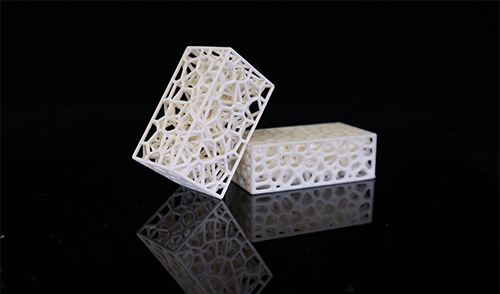
One possibility: change the mechanical properties within lattice structures, point by point.
Digital Engineeringwww.digitalengineering247.com
Multiscale modeling and simulation
The June 2021 issue of Digital Engineering includes a feature on how the use of multiscale material modeling and simulation software is helping expand the role of AM. The issue also includes a case study about how the Walkinshaw Andretti United race team is leveraging 3D printing on the track.
Read the issue here.
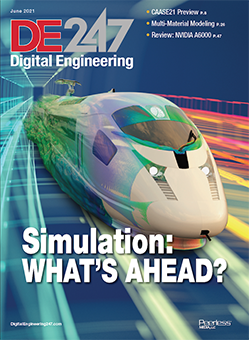
June issue of Digital Engineering.
Medical Device Developmentswww.nsmedicaldevices.com
Latest Issue: New dimensions for 3D printing
In the booming market for implanted devices, 3D printing is an increasingly popular fabrication method, but researchers are looking beyond its cost-efficiency and speed to see how it can help create devices that perform better inside the body. In the latest edition of Medical Device Developments, we investigate how 3D printing is redefining biocompatibility.
Within manufacturing technology, we look at AI and machine learning, which have promised to transform medical device manufacturing for years, and how new technology is making production oversight faster and more efficient—with enormous consequences for manufacturers and patients alike. Also, with COVID-19 having exposed undeniable vulnerabilities in the medical supply chain, we explore how the pandemic will change the way health systems procure equipment in the future and what OEMs can do to stay competitive.
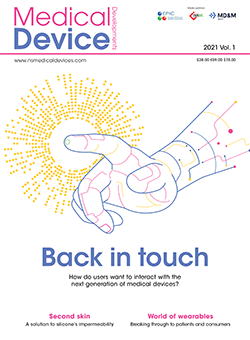
The latest edition of Medical Device Developments.
3D Printing Industrywww.3dprintingindustry.com
3D Printing Industry Awards return, TCT Asia debrief & regenerative medicine
Face-to-face events are slowly coming back. After the success of the AMUG Conference, TCT Asia welcomed exhibitors and attendees in Shanghai. Our editor-in-chief caught up with Farsoon, DyeMansion, Polymaker, and Peopoly to hear insights from attendees—watch the video on our new YouTube channel.
Our next online event looks at the opportunities, challenges, and future of regenerative medicine. Experts from 3D Systems, Cellink, and Lund University will join 3DPI’s Hayley Everett. Register here.
Finally, the 3D Printing Industry Awards are set to return. More news is coming soon, so make sure you visit our website.
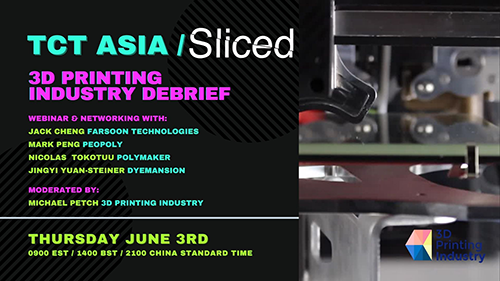
Additive Manufacturing Mediawww.additivemanufacturing.media
AM WTF: Why the Failure?
Metal 3D printing has great potential to transform parts, products, and lives—but there is still much that can go wrong in the process. AM: Why The Failure is a video series that embraces the failure for the lessons it can teach.
In each episode, Dr. Tim Simpson (Pennsylvania State University and The Barnes Global Advisors) and Peter Zelinski (Additive Manufacturing Media) troubleshoot a failed build and discuss how to avoid the same type of error in the future. Find the full series on YouTube.
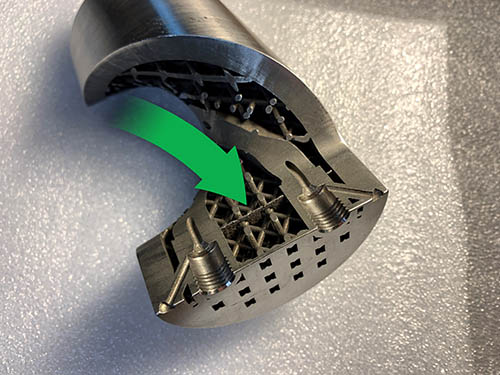
Why does this build have a feature that wasn’t in the model? Find out in Episode 2 of AM: Why The Failure?
The Additive Reportwww.theadditivereport.com
Aerospace parts 3D-printed from refractory metals may let planes travel at Mach 15
Refractory metals are so strong, tough, and heat resistant that they’re damned near impossible to machine. Printing them, however, is seemingly no big deal. (Read here.)
Other interesting things you’ll find on Additive Report’s website:
- An Orlando children’s hospital uses 3D-printed models of fetuses to help surgeons prep for in-utero surgery.
- ‘Good vibes’ at the Additive Manufacturing Users Group Conference.
- Blog: Memorial Day remembrances of Michigan’s manufacturing past. (Read here.)
If you don’t receive The Additive Report, please subscribe here.
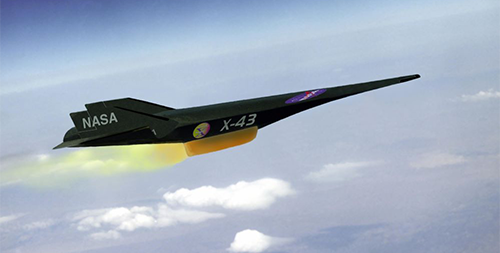
Aircraft parts additively manufactured from tungsten, molybdenum, and other refractory metals promise to significantly boost aircraft speeds. Credit: NASA
TCT Magazinewww.tctmagazine.com
A guide to the TCT 3Sixty conference
TCT 3Sixty, the UK’s leading summit for 3D printing and AM intelligence, returns to the NEC Birmingham on September 28-30, 2021, with three live content platforms dedicated to evaluating, adopting, and optimizing AM technology.
Visit the Evaluation Stage to hear from experts, including Dr. Phil Reeves and Dr. Jennifer Johns, about key considerations for building an AM business case. Take in inspiring case studies and learn from users such as Boeing and Rolls Royce about how to get the most out of your machine on the Adoption Stage. When you’re ready to take that next step, the Optimization Stage is where you’ll learn how to maximize the performance and efficiency of mature AM installations from super users such as Jabil and BAE Systems.
Check out the full line-up and be sure to register early to get the most out of your TCT 3Sixty experience, which includes networking opportunities with speakers and delegates.
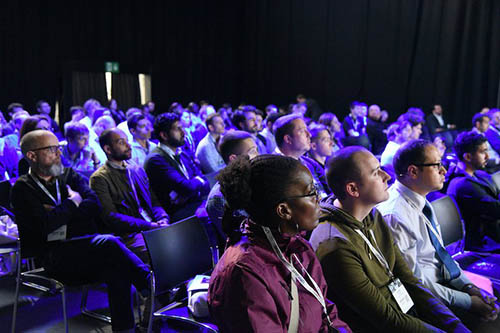
The TCT 3Sixty Conference will focus on the three stages of the AM adoption curve.
Note: AM is the abbreviation for additive manufacturing.
